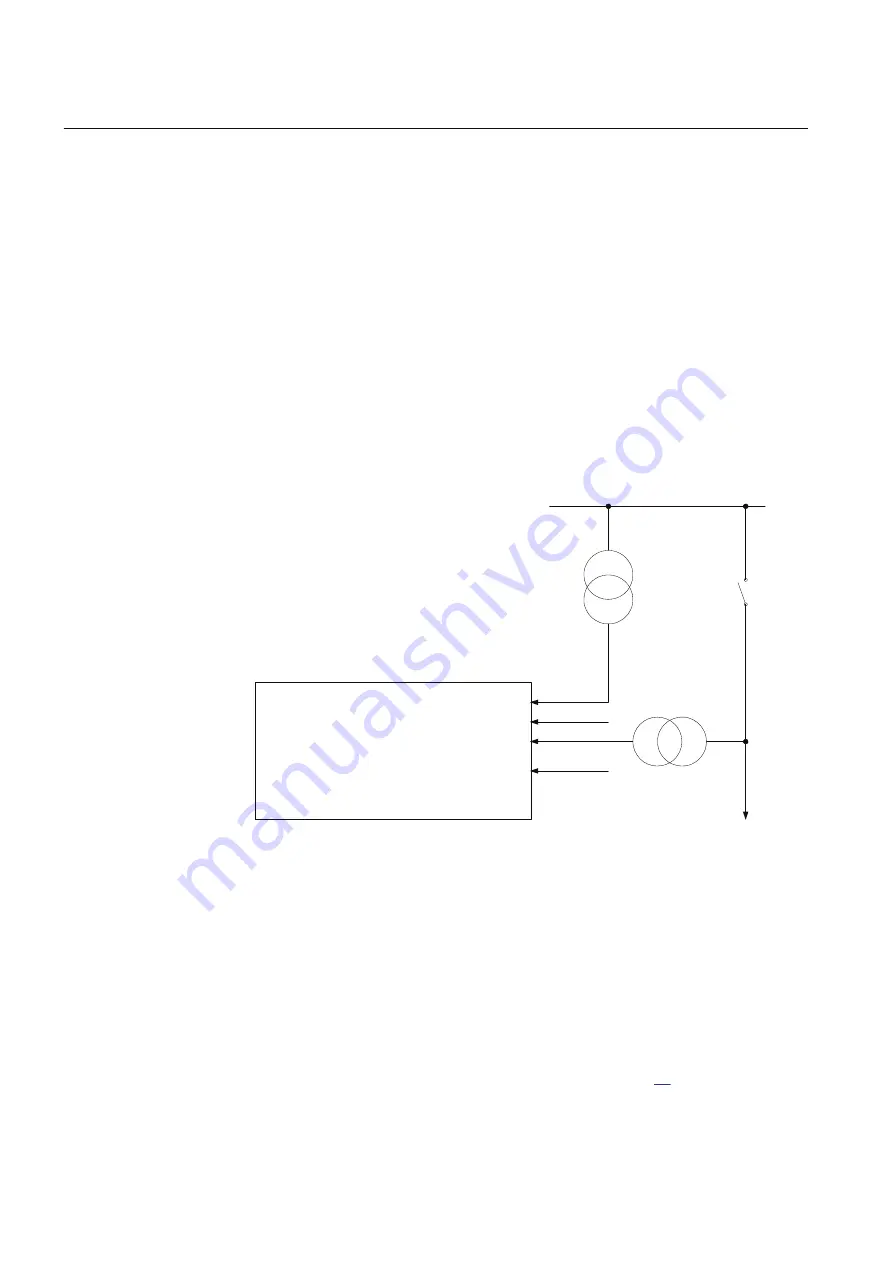
with a long operation time and high sensitivity regarding the frequency difference.
The phase angle difference setting can be set for steady state conditions.
Another example is the operation of a power network that is disturbed by a fault
event: after the fault clearance a highspeed auto-reclosing takes place. This can
cause a power swing in the net and the phase angle difference may begin to
oscillate. Generally, the frequency difference is the time derivative of the phase
angle difference and will, typically oscillate between positive and negative values.
When the circuit breaker needs to be closed by auto-reclosing after fault-clearance
some frequency difference should be tolerated, to a greater extent than in the steady
condition mentioned in the case above. But if a big phase angle difference is
allowed at the same time, there is some risk that auto-reclosing will take place
when the phase angle difference is big and increasing. In this case it should be safer
to close when the phase angle difference is smaller.
To fulfill the above requirements the synchrocheck function is provided with
duplicate settings, one for steady (Manual) conditions and one for operation under
disturbed conditions (Auto).
SynchroCheck
UHighBusSC > 50 - 120 % of GblBaseSelBus
UHighLineSC > 50 - 120 % of GblBaseSelLine
UDiffSC < 0.02 – 0.50 p.u.
PhaseDiffM < 5 - 90 degrees
PhaseDiffA < 5 - 90 degrees
FreqDiffM < 3 - 1000 mHz
FreqDiffA < 3 - 1000 mHz
Fuse fail
Fuse fail
Line voltage
Line
reference
voltage
Bus voltage
IEC10000079-2-en.vsd
IEC10000079 V2 EN-US
Figure 31:
Principle for the synchrocheck function
8.1.2.3
Energizing check
M12310-3 v12
The main purpose of the energizing check function is to facilitate the controlled re-
connection of disconnected lines and buses to energized buses and lines.
The energizing check function measures the bus and line voltages and compares
them to both high and low threshold values. The output is given only when the
actual measured conditions match the set conditions. Figure
substations, where one (1) is energized and the other (2) is not energized. The line
Section 8
1MRK 511 423-UEN A
Control
98
Bay control REC650 2.2 IEC
Application manual






























